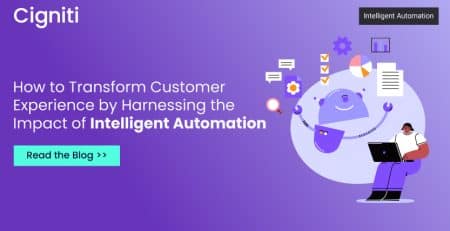3 Critical Areas Where Intelligent Automation is Revolutionizing Banking
In the world of banking, where customer expectations are continually evolving, and regulatory landscapes are becoming increasingly complex, the integration of intelligent automation stands out as a pivotal solution.
Intelligent automation, which combines artificial intelligence (AI) with robotic process automation (RPA), allows banks to streamline operations, enhance customer experiences, and maintain compliance with ever-changing regulations.
Here are three critical areas where intelligent automation is revolutionizing the banking industry.
1. Customer Service and Engagement
One of the most visible impacts of intelligent automation in banking is in the area of customer service. Traditional banking systems often struggle to provide personalized, round-the-clock service that modern customers demand. IA addresses this challenge through several innovative solutions:
a. Chatbots and Virtual Assistants
AI-powered chatbots and virtual assistants are ubiquitous on banking websites and mobile apps. These tools can handle various customer inquiries, from balance checks and transaction histories to more complex issues like loan applications and financial advice.
Unlike human agents, these virtual assistants are available 24/7, offering immediate responses and improving customer satisfaction.
b. Personalized Financial Advice
Banks can now analyze vast customer data using advanced analytics and machine learning to provide personalized financial advice. Intelligent enables the continuous monitoring of customer accounts, spending habits, and financial goals to offer tailored recommendations for saving, investing, and managing money.
2. Operational Efficiency and Cost Reduction
The second critical area in which intelligent automation and intelligent process automation profoundly impact is improving operational efficiency and reducing costs. Traditional banking operations are often bogged down by manual, repetitive tasks that are time-consuming and prone to errors.
Banking Automation transforms these processes by automating routine tasks, thus allowing banks to focus on more strategic initiatives.
a. Automated Back-Office Processes
Banks have historically relied on large teams to handle back-office tasks such as data entry, reconciliation, and reporting. RPA can automate these repetitive tasks, ensuring faster and more accurate processing.
For instance, automation can significantly accelerate tasks like customer onboarding, loan processing, and KYC (Know Your Customer) verification.
b. Fraud Detection and Prevention
Fraud is a major concern for banks. According to McKinsey, ‘Estimates of fraud’s impact on consumers and financial institutions vary significantly, but losses to banks alone are conservatively estimated to exceed $31 billion globally’.
Intelligent automation enhances fraud detection and prevention using AI to analyze transaction patterns and identify suspicious activities in real-time.
3. Regulatory Compliance and Risk Management
The third area where intelligent automation is proving to be indispensable is in regulatory compliance and risk management. Banks are subject to many regulations, and maintaining compliance can be resource-intensive. Intelligent Automation helps banks stay compliant while reducing the burden on their compliance teams.
a. Automated Compliance Monitoring
Intelligent automation can continuously monitor transactions and activities to ensure compliance with regulatory requirements. By automating the monitoring process, banks can quickly identify and address any deviations from compliance, reducing regulatory penalties risk.
b. Risk Assessment and Management
Risk management is another critical area in which intelligent Automation makes a significant impact. AI algorithms can assess credit, market, and operational risks more accurately and quickly than traditional methods. This allows banks to make more informed decisions and reduce risk exposure.
How Cigniti Is Helping Its Customers with Strategic Partnerships
Cigniti Technologies has revolutionized the payments and financial services industry through strategic partnerships with leading RPA providers like UiPath, Automation Anywhere, and BluePrism. These alliances have enabled Cigniti to deliver robust, intelligent automation solutions seamlessly integrating into their clients’ operations.
By leveraging the strategic partnership with UiPath, Cigniti has addressed key challenges such as managing production maintenance, handling application errors, and ensuring proactive communication.
Cigniti has successfully reduced operational hours by approximately 140 hours from a base of 60,000, achieved a 20% improvement in BOT availability, and fully integrated its automation solutions with ITSM tools.
With 24 BOTS running at a 100% success rate in production, Cigniti has also boosted operational efficiency by 10% through close collaboration with application and database teams. This comprehensive approach has allowed Cigniti to maintain its service levels and deliver exceptional value to its clients, underscoring its leadership in integrated and automated payment technologies.
Conclusion
Intelligent Automation in banking is no longer just a competitive advantage. It is necessary to stay relevant in today’s fast-paced financial landscape. Intelligent Automation empowers banks to deliver superior value while maintaining robust, efficient, and secure operations by enhancing customer service, improving operational efficiency, and ensuring regulatory compliance.
As banks continue to embrace these technologies, they will revolutionize their internal processes and set new standards for excellence in the financial industry.
To know more, visit the Intelligent Automation page.





Leave a Reply